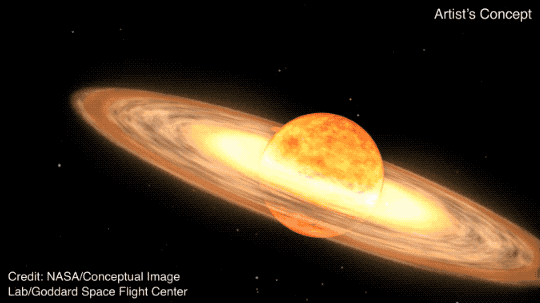Miss the solar eclipse and the northern lights? Look for this 'once-in-a-lifetime' exploding star
The celestial wonders of April's solar eclipse and the mesmerizing dance of last weekend's aurora borealis captivated millions, yet the cosmos has an even more elusive spectacle in store. Before the year's end, the night sky will unveil an astronomical phenomenon so extraordinary that it eclipses the rarity of both these events combined.
A blazingly bright event known as a nova, a light show that happens approximately once every 80 years, is expected to be visible in the coming months.
"This could be a once-in-a-lifetime viewing opportunity," NASA said.
 |
An animation showing a nova of a white dwarf that is orbiting a larger red giant star. (NASA’s Goddard Space Flight Center) |
T Coronae Borealis is a white dwarf 3,000 light-years from Earth and will be the focal point of the highly anticipated outburst. It last flashed in the sky in 1946 and is predicted to happen again before October.
A nova might not be as breathtaking as a total solar eclipse or as awe-inspiring as the aurora, but it happens far less frequently than either. For comparison, total solar eclipses happen multiple times a decade, while the widespread nature of the northern lights on May 10 was the best light display of its kind in 21 years.
"Once its brightness peaks, it should be visible to the unaided eye for several days and just over a week with binoculars before it dims again, possibly for another 80 years," NASA explained. Normally, you would need a telescope to spot the star in the night sky.
It is located near Corona Borealis, sandwiched between the constellations Hercules and Boötes. For people across North America, it is visible in the eastern sky after nightfall and gradually climbs high in the southern sky as the night transpires.
 |
A sky chart showing the constellation Corona Borealis between Hercules and Boötes. T Coronae Borealis will appear near Corona Borealis. (NASA) |
The predicted nova of T Coronae Borealis occurs because it is gravitationally bound to another star, known as a binary system. As matter from one star collects on the surface of T Coronae Borealis, it heats up over time and, roughly once every 80 years, results in the bright outburst that causes it to shine incredibly bright for a short time.
This is just one of five known reoccurring novas in the Milky Way galaxy.
Want next-level safety, ad-free? Unlock advanced, hyperlocal severe weather alerts when you subscribe to Premium+ on the AccuWeather app. AccuWeather Alerts™ are prompted by our expert meteorologists who monitor and analyze dangerous weather risks 24/7 to keep you and your family safer.




